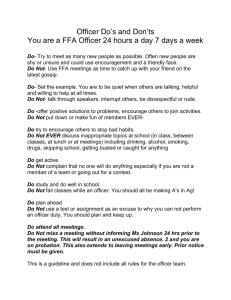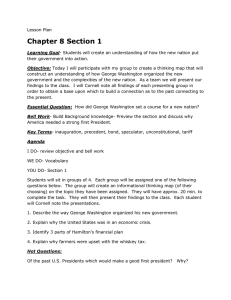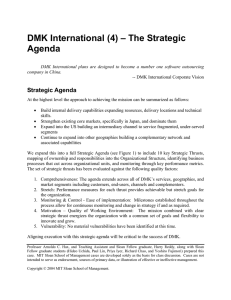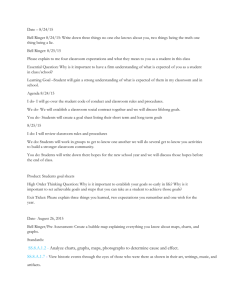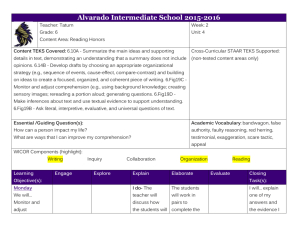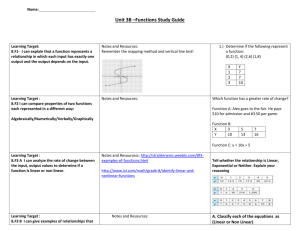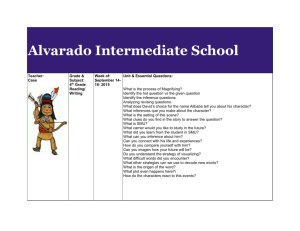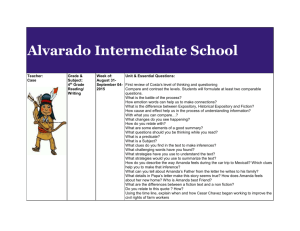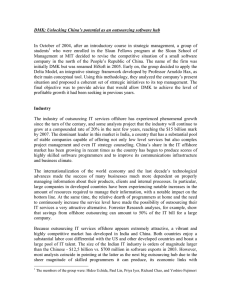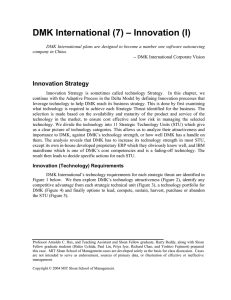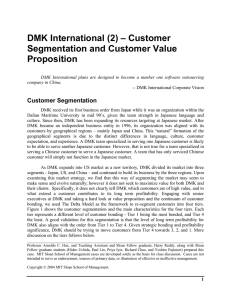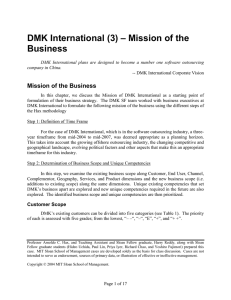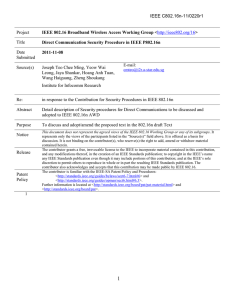Leesburg High School Biology Lesson Plan Week of: 8/31/15 – 9/4
advertisement
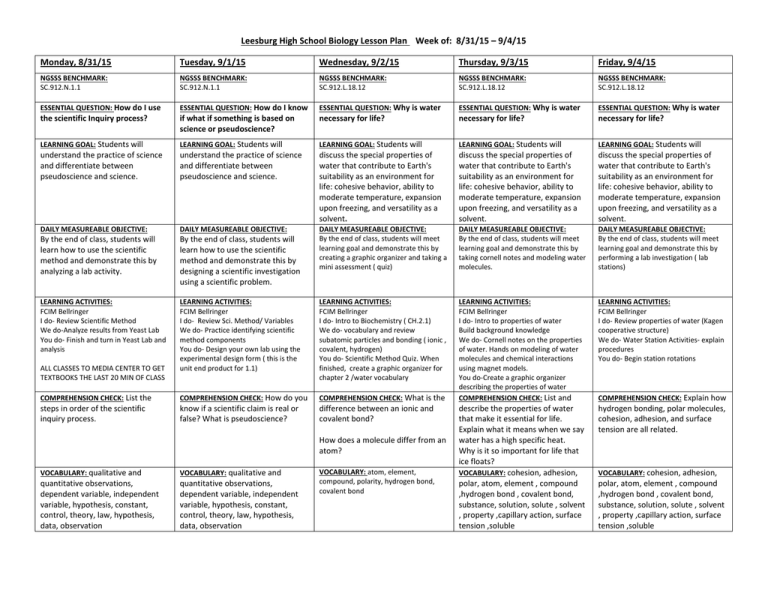
Leesburg High School Biology Lesson Plan Week of: 8/31/15 – 9/4/15 Monday, 8/31/15 Tuesday, 9/1/15 Wednesday, 9/2/15 Thursday, 9/3/15 Friday, 9/4/15 NGSSS BENCHMARK: SC.912.N.1.1 NGSSS BENCHMARK: SC.912.N.1.1 NGSSS BENCHMARK: SC.912.L.18.12 NGSSS BENCHMARK: SC.912.L.18.12 NGSSS BENCHMARK: SC.912.L.18.12 ESSENTIAL QUESTION: How do I use ESSENTIAL QUESTION: How do I know ESSENTIAL QUESTION: Why is water ESSENTIAL QUESTION: Why is water ESSENTIAL QUESTION: Why is water the scientific Inquiry process? if what if something is based on science or pseudoscience? necessary for life? necessary for life? necessary for life? LEARNING GOAL: Students will LEARNING GOAL: Students will LEARNING GOAL: Students will LEARNING GOAL: Students will LEARNING GOAL: Students will understand the practice of science and differentiate between pseudoscience and science. understand the practice of science and differentiate between pseudoscience and science. discuss the special properties of water that contribute to Earth's suitability as an environment for life: cohesive behavior, ability to moderate temperature, expansion upon freezing, and versatility as a solvent. discuss the special properties of water that contribute to Earth's suitability as an environment for life: cohesive behavior, ability to moderate temperature, expansion upon freezing, and versatility as a solvent. discuss the special properties of water that contribute to Earth's suitability as an environment for life: cohesive behavior, ability to moderate temperature, expansion upon freezing, and versatility as a solvent. DAILY MEASUREABLE OBJECTIVE: DAILY MEASUREABLE OBJECTIVE: By the end of class, students will learn how to use the scientific method and demonstrate this by analyzing a lab activity. By the end of class, students will learn how to use the scientific method and demonstrate this by designing a scientific investigation using a scientific problem. DAILY MEASUREABLE OBJECTIVE: By the end of class, students will meet learning goal and demonstrate this by creating a graphic organizer and taking a mini assessment ( quiz) DAILY MEASUREABLE OBJECTIVE: By the end of class, students will meet learning goal and demonstrate this by taking cornell notes and modeling water molecules. DAILY MEASUREABLE OBJECTIVE: By the end of class, students will meet learning goal and demonstrate this by performing a lab investigation ( lab stations) LEARNING ACTIVITIES: FCIM Bellringer I do- Review Scientific Method We do-Analyze results from Yeast Lab You do- Finish and turn in Yeast Lab and analysis LEARNING ACTIVITIES: FCIM Bellringer I do- Review Sci. Method/ Variables We do- Practice identifying scientific method components You do- Design your own lab using the experimental design form ( this is the unit end product for 1.1) LEARNING ACTIVITIES: FCIM Bellringer I do- Intro to Biochemistry ( CH.2.1) We do- vocabulary and review subatomic particles and bonding ( ionic , covalent, hydrogen) You do- Scientific Method Quiz. When finished, create a graphic organizer for chapter 2 /water vocabulary LEARNING ACTIVITIES: FCIM Bellringer I do- Review properties of water (Kagen cooperative structure) We do- Water Station Activities- explain procedures You do- Begin station rotations COMPREHENSION CHECK: List the COMPREHENSION CHECK: How do you COMPREHENSION CHECK: What is the LEARNING ACTIVITIES: FCIM Bellringer I do- Intro to properties of water Build background knowledge We do- Cornell notes on the properties of water. Hands on modeling of water molecules and chemical interactions using magnet models. You do-Create a graphic organizer describing the properties of water COMPREHENSION CHECK: List and steps in order of the scientific inquiry process. know if a scientific claim is real or false? What is pseudoscience? difference between an ionic and covalent bond? describe the properties of water that make it essential for life. Explain what it means when we say water has a high specific heat. Why is it so important for life that ice floats? VOCABULARY: cohesion, adhesion, polar, atom, element , compound ,hydrogen bond , covalent bond, substance, solution, solute , solvent , property ,capillary action, surface tension ,soluble hydrogen bonding, polar molecules, cohesion, adhesion, and surface tension are all related. ALL CLASSES TO MEDIA CENTER TO GET TEXTBOOKS THE LAST 20 MIN OF CLASS How does a molecule differ from an atom? VOCABULARY: qualitative and VOCABULARY: qualitative and quantitative observations, dependent variable, independent variable, hypothesis, constant, control, theory, law, hypothesis, data, observation quantitative observations, dependent variable, independent variable, hypothesis, constant, control, theory, law, hypothesis, data, observation VOCABULARY: atom, element, compound, polarity, hydrogen bond, covalent bond COMPREHENSION CHECK: Explain how VOCABULARY: cohesion, adhesion, polar, atom, element , compound ,hydrogen bond , covalent bond, substance, solution, solute , solvent , property ,capillary action, surface tension ,soluble HOMEWORK: ASSIGNED READINGS:Chapter 1.3 and finish vocabulary definitions ESOL/ESE: guided practice/modeling 1st period support facilitation RECURSIVE STANDARDS: collaboration/ speaking/listening HOMEWORK: Review chapter 1.3 and your vocabulary for quiz tomorrow HOMEWORK: Ch. 2.1 HOMEWORK: Ch. 2.2 HOMEWORK: Review Ch. 2.2 ESOL/ESE: guided practice/modeling ESOL/ESE: hands on/ cooperative structures RECURSIVE STANDARDS: writing ESOL/ESE: hands on/ cooperative structures RECURSIVE STANDARDS: writing ESOL/ESE: guided hands on lab RECURSIVE STANDARDS: writing, collaboration, speaking/listening The Science of Water Lab Activities: Under Lesson 2: http://nanosense.sri.com/activities/finefilters/index.html RECURSIVE STANDARDS: collaboration
